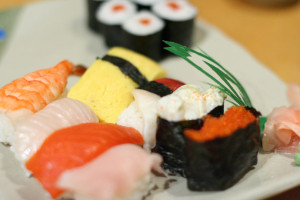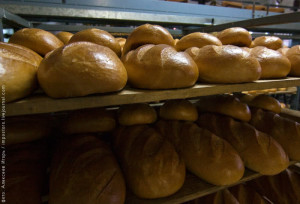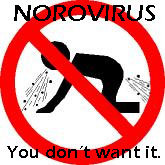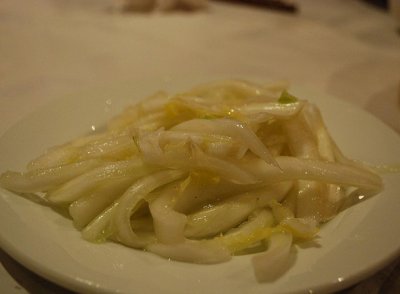Japan is going to ban raw beef liver from restaurants effective July 1, 2012, but the move could be a precursor for a wider ban on equally risky – but beloved – raw foods in Japan.
In May 2011, E. coli O111 in raw beef – not liver but hamburger — killed five and sickened at least 180 in Japan.
According to the Wall Street Journal, a couple months later, the government urged businesses to show self-restraint in serving raw beef — yet 13 people were affected by raw beef-related food poisoning since July, according to the health ministry. Over 850 people have been hospitalized for .jpg) food poisoning after consuming raw beef liver from 1998 through the end of 2011. About 9% of those cases were caused by E. coli contamination.
food poisoning after consuming raw beef liver from 1998 through the end of 2011. About 9% of those cases were caused by E. coli contamination.
Subsequently, testing of raw meat was increased, and according to a report for the government, of the 173 cow livers tested from 16 different locations nationwide, three samples were found to be contaminated with E. coli O157 inside the meat, not just on its exterior, and five samples had exterior contaminations.
In April, a food safety panel under the Cabinet Office backed the plan to restrict serving raw beef liver. The new rules also target raw beef liver sold to households. Raw beef liver will remain on refrigerated shelves, but stores will be required to put up signs advising consumers to only eat the meat cooked.
The new ban on raw liver means restaurants will be required to cook beef liver at 63 degrees Celsius (145.4 degrees Fahrenheit) for a minimum 30 minutes, or 75 degrees Celsius for at least one minute, before serving the meat. Failure to comply could result in a ¥2 million fine as well as two years in jail.
The All Japan Meat Industry Co-operative Association has protested the panel’s deliberations, saying this could be the beginning of an endless campaign to remove other raw foods from Japanese dining tables — a particularly serious charge in a nation heavily reliant on raw foods. “If this direction continues, they could also say ‘eating raw eggs is dangerous so it will be banned.’ And following the same logic, we may no longer be able to eat sashimi because the most number of food poisoning cases comes from raw fish,” the group wrote in a letter to the health ministry in early May. More food-poisoning illnesses spring from raw fish, in large part because the volume consumed far exceeds other foods. But the ministry official said it targeted beef liver because of the enormous strength of the pathogen.
Yomiuri Shimbun reports that many livestock farmers were staggered by the ministry’s decision, which could cut their income considerably, although consumer groups praised the ban.
Hisa Anan, the chief of the secretariat of the National Liaison Committee of Consumers’ Organization, welcomed the ministry’s move.
"The ministry couldn’t eradicate food poisoning just by asking restaurants to voluntarily stop serving raw beef liver. I guess the ministry had no alternative," she said.
However, others experts have criticized the ministry’s decision.
"The ministry should encourage consumers to make their own decisions by providing them with adequate information, rather than imposing a blanket ban," said Tsutomu Sekizaki, director of the University of Tokyo’s Research Center for Food Safety.
As the Brits have repeatedly shown, cooking liver don’t work so well after numerous of outbreaks of Campylobacter in undercooked liver pate. Bans, however, seem heavy-handed. Worse is the inconsistency: why just raw beef liver instead of raw beef? It was raw hamburger that caused the E. coli O111 outbreak. Maybe something is being lost in translation, but the notice does reek of a trial balloon.
 bread that was probably contaminated by food workers.
bread that was probably contaminated by food workers.






 four victims were women in their 80s and 100s living in elderly care facilities in the city.
four victims were women in their 80s and 100s living in elderly care facilities in the city..jpg) food poisoning after consuming raw beef liver from 1998 through the end of 2011. About 9% of those cases were caused by E. coli contamination.
food poisoning after consuming raw beef liver from 1998 through the end of 2011. About 9% of those cases were caused by E. coli contamination.  anybody can handle blowfish even without a license," said Hashimoto, a blowfish chef for some 30 years.
anybody can handle blowfish even without a license," said Hashimoto, a blowfish chef for some 30 years.